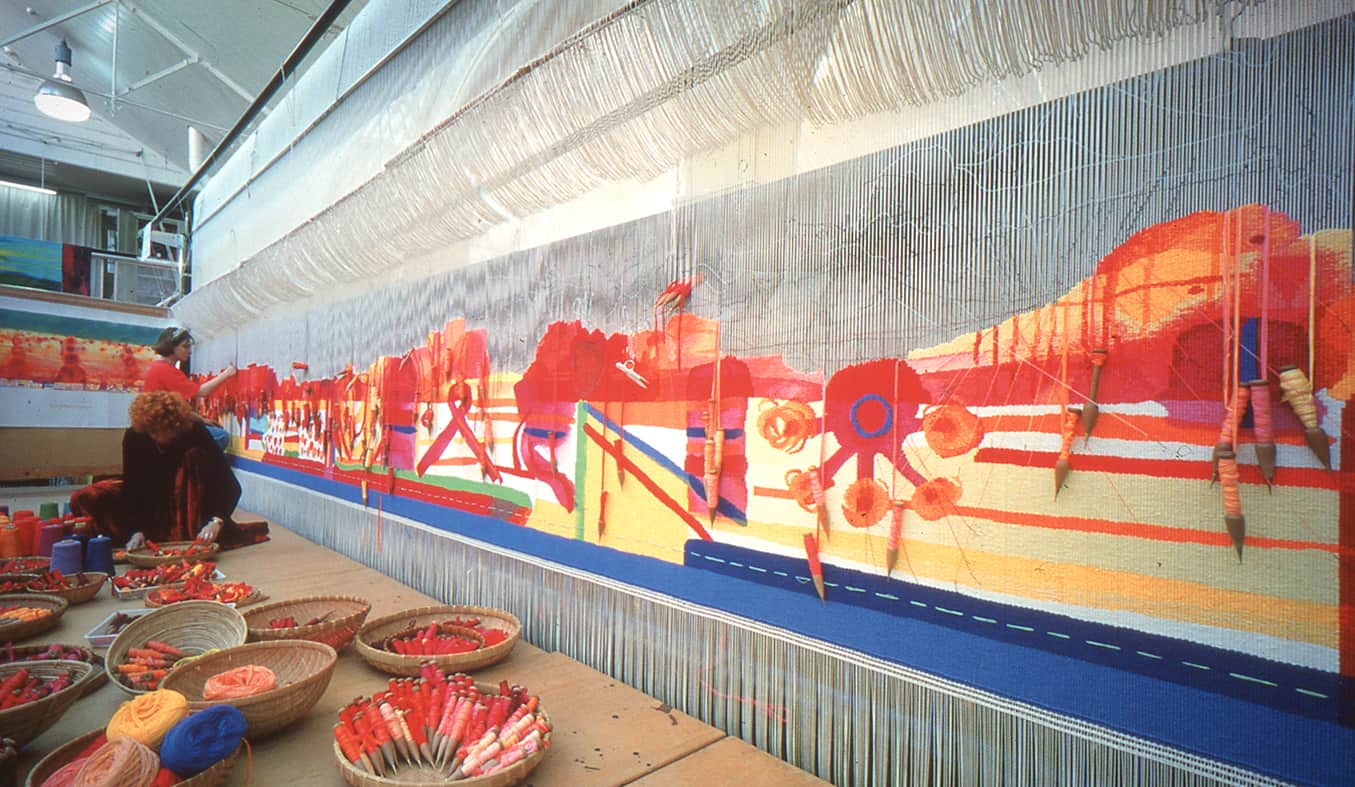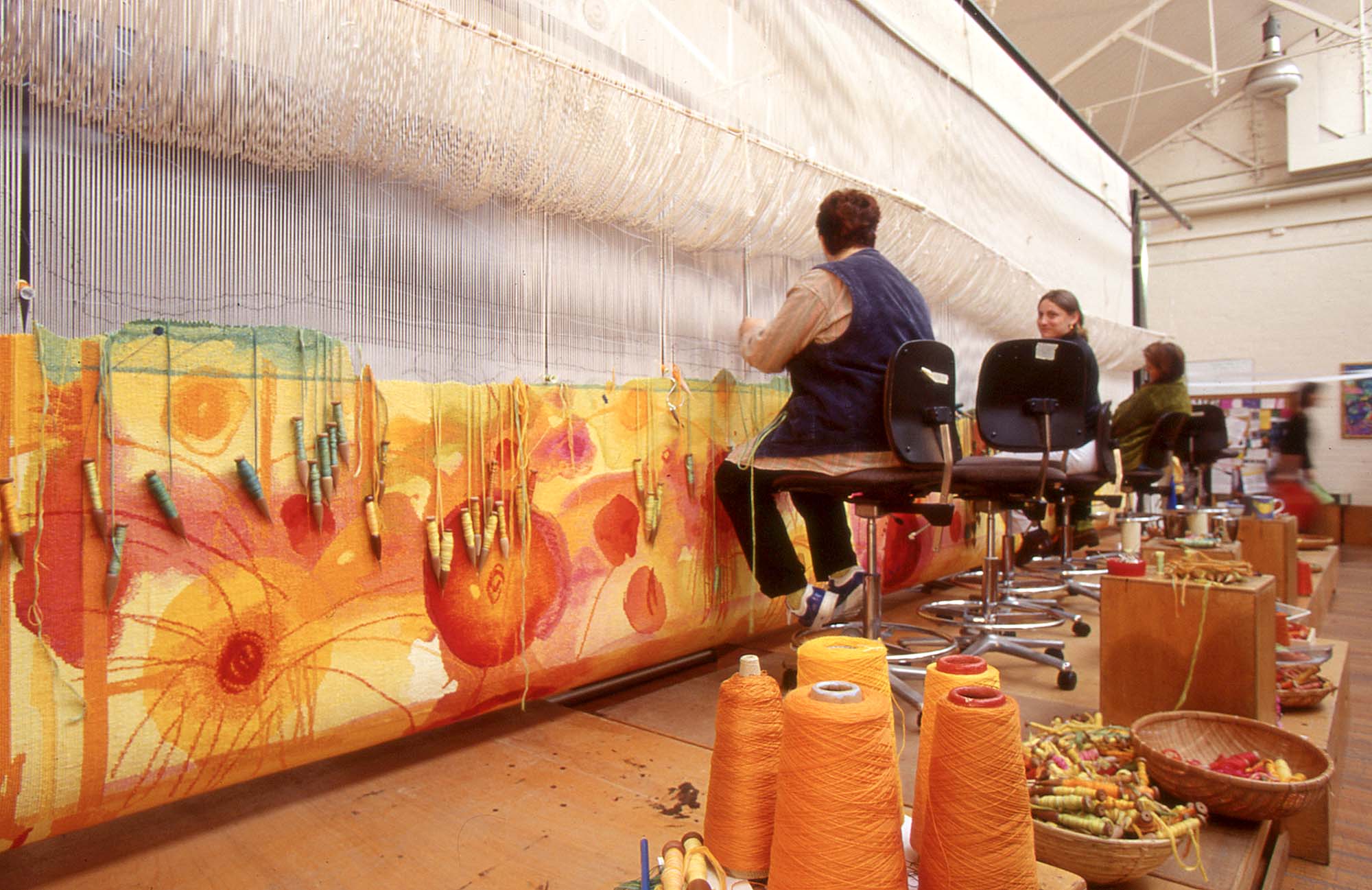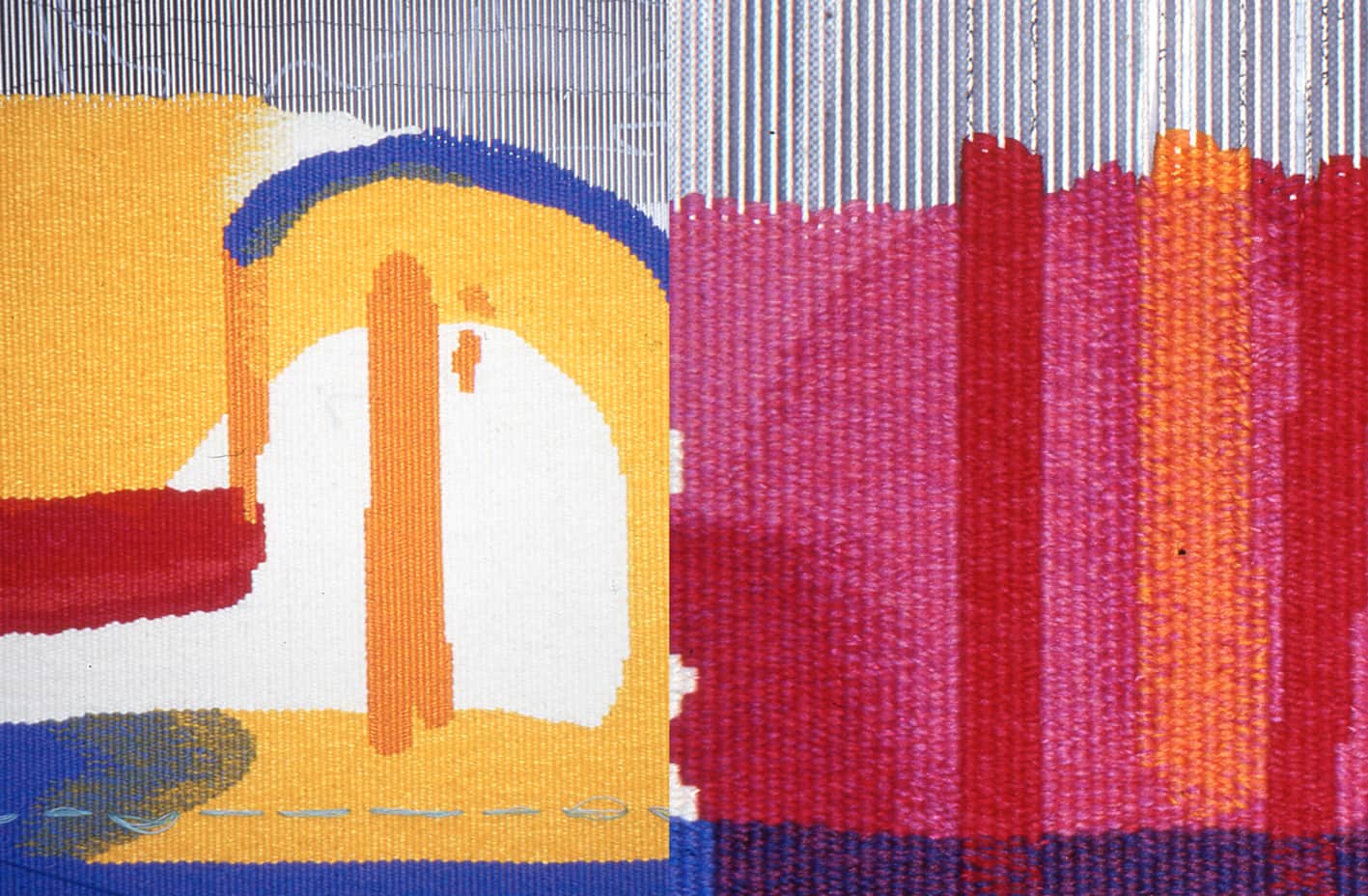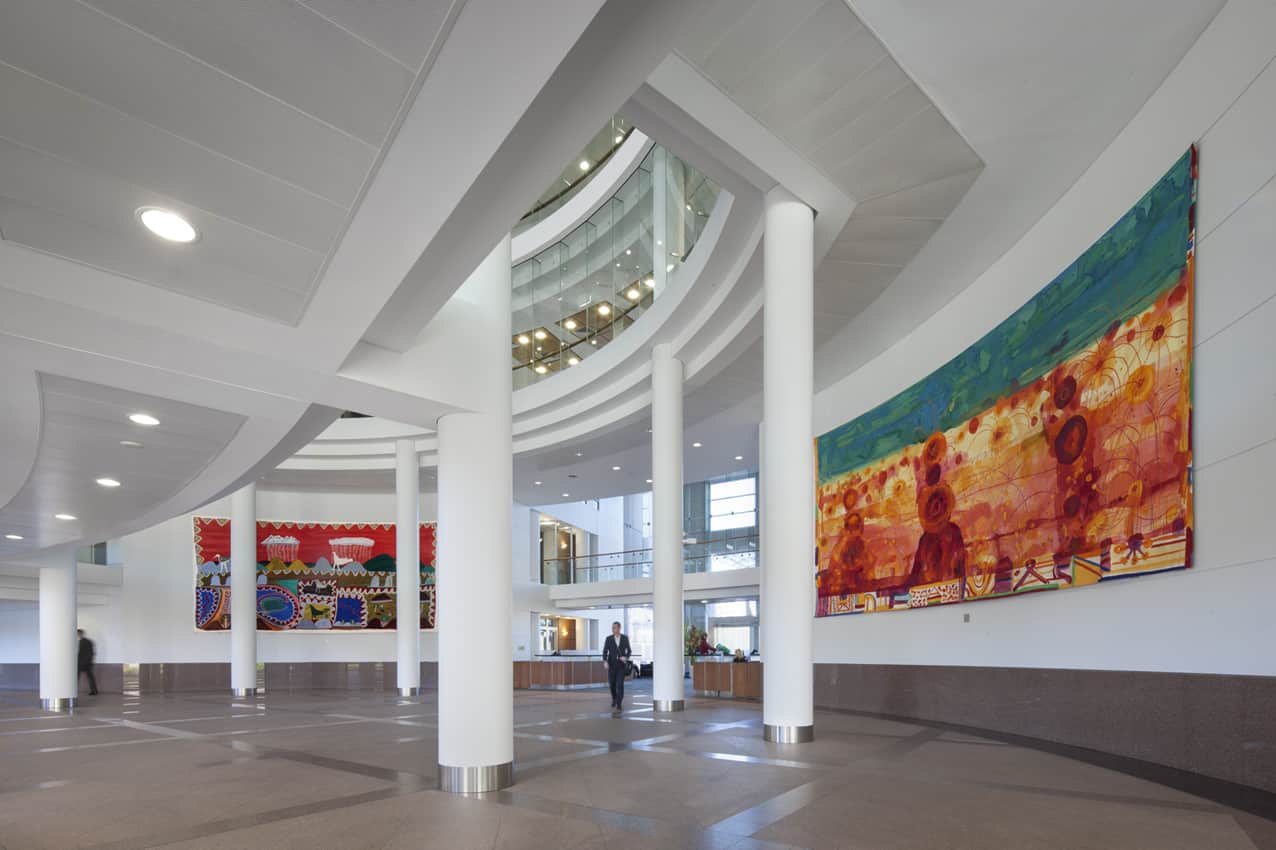





Rising suns over Australia Felix was the first of several tapestries designed by John Olsen AO OBE and woven by the ATW in 1997.
After working with tapestry workshops in France and Portugal in the 1960s, Olsen found the work of ATW weavers to be world-class and has been a steadfast supporter of the ATW ever since. Olsen is widely considered to be one of Australia’s most important living artists. He is known for his lyrical drawings and paintings that feature native Australian flora and fauna. His works are constructed with multiple meandering lines, energetic life-forms and the rich colours that make up the Australian landscape.
Rising suns over Australia Felix, commissioned by the Department of Foreign Affairs and Trade, was inspired on a return flight to Australia, at the exact moment when Olsen witnessed a sunrise and saw the ascending orb gradually illuminate the expansive land below. The scene is split into two distinct halves – sky and land – but in both realms the surface is dappled, suggesting the luminosity of the dawn scene. The monumental scale of the tapestry effectively conjures the vastness of the Australian continent.
Olsen’s work is housed in Olsen Gallery and has been collected widely by national and international institutions.
In 1989 the ATW collaborated with John Coburn to produce St George tapestry, one of many works designed by Coburn and woven by the ATW.
John Coburn (1925-2006), more than any other Australian artist, displayed a true affinity with the tapestry medium. He lived and worked in France in the late 1960s and early 1970s, collaborating with the renowned French workshop Aubusson. The establishment of the ATW (then the Victorian Tapestry Workshop) allowed him to shift production and commence ongoing tapestry collaboration on home soil. The Workshop produced more than 25 tapestries based on Coburn’s designs, including works for Parliament House in Brisbane, National Australia Bank, Monash Medical Centre and many private and corporate collections.
In St George Tapestry, a commission for St George Building Society, Coburn wields his menagerie of anthropomorphic forms: a simplified vernacular of motifs like birds’ wings or fish tails, interspersed with abstract shapes. The composition is carefully constructed so that no forms overlap, but are arranged on a velvety ground as if they were object specimens laid for a naturalist’s view. Coburn’s curvilinear forms, however deceptively simple, posed a challenge for weaving.
John Coburn's works have been housed in major public and private collections, both nationally and internationally.
The ATW produced the monumental Great Hall Tapestry, spanning 9.18 x 19.9m, and designed by prominent Australian artist Arthur Boyd, for Parliament House in Canberra in 1988.
Boyd (1920-1999) is considered to be one of Australia's most distinguished 20th-century artists. He came from the Boyd dynasty of painters, sculptors, ceramicists and architects, and was part of the Angry Penguins school in the 1940s and later the Antipodeans, which included John Perceval and Charles Blackman. Boyd represented Australia at the Venice Biennale in 1958 and again in 2000. In 1979 he was awarded an Order of Australia, augmented by a Companion of the Order of Australia in 1992.
The design of Parliament House in Canberra was won by architect Romaldo Giurgola in 1979, and created the opportunity for the commission of a major public artwork. As an eminent living artist Arthur Boyd was offered the chance to produce an artwork that would cover almost the entire south wall of the Reception Hall. Extensive discussions ensued about the best medium to suit this scale, and tapestry was decided on as the ideal choice.
The tapestry design represents a forest of towering eucalyptus trees from the grounds of Boyd's rural retreat and studio at Bundanon. The tree-scape is quintessentially Australian, a homage to the majesty of the bush. Strong vertical rhythms structure the work, and the life-like proportions of the trees recreate the enveloping feel of a forest setting, fulfilling the architect's brief that the entire wall would almost appear as a three-dimensional living landscape.
The massive scale of the work - an astonishing nine meters in height and almost twenty meters in width - makes it the second largest tapestry in the world. It was woven in vertical sections by 12 weavers over a two-year period, and remains the most ambitious tapestry the Workshop has ever produced.
Arthur Boyd’s legacy is maintained through the Bundanon Trust collection and many major collections in Australia and overseas.